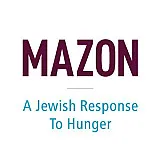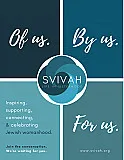The Story of Exodus
During the time when Pharaoh issued his decree to kill Israelite males, Moses, who later was to lead the Israelites out of slavery in Egypt to freedom, was an infant. His concerned mother, Jochebed placed him in a basket of reeds in the Nile River while Moses’ sister Miriam watched from a distance to see who would come to find him. The basket was found by the Pharaoh’s daughter, who decided to raise the infant as her own son and named him Moses. She unknowingly hired Jochebed as a nurse to care for him, and Jochebed secretly taught Moses his Israelite heritage. At age 40, on a visit to see his fellow Israelites, Moses saw an Egyptian taskmaster beating an Israelite slave and in his rage, killed the Egyptian. Fearing for his life, Moses fled Egypt. He fled across the desert, for the roads were watched by Egyptian soldiers, and took refuge in Midian, an area in present-day northwestern Saudi Arabia along the eastern shores of the Red Sea.
While in Midian, Moses met a Midianite priest named Jethro and became a shepherd for the next 40 years, eventually marrying one of Jethro’s daughters, Zipporah. Then, when Moses was about 80 years of age, God spoke to him from a burning bush and said that he and his brother Aaron were selected by God to lead the Israelites out of Egypt to freedom. At first, Moses hesitated to take on such a huge task, but eventually Moses and his brother Aaron set about returning to Egypt, commencing what was to be the spectacular and dramatic events that are told in the story of Passover. It is said that the Israelites entered Egypt as a group of tribes and left Egypt as one nation. It has also been estimated that the Passover exodus population comprised about 3 million people, plus numerous flocks of sheep who all crossed over the border of Egypt to freedom in Canaan.
Under the reign of Pharaoh Thutmose III in Egypt in 1476 BCE, the Israelite leader Moses (“Moshe” in Hebrew) – guided by God – led his people out of Egypt after a series of 10 plagues that were created by God and initiated by Moses. Prior to most of the plagues, Moses had warned the Pharaoh about each plague and that it would devastate his people, if he refused to let the Israelites go. After the first two plagues, the Pharaoh refused to let them go because his court magicians were able to re-create the same miracles, and so the Pharaoh thought: “This proves that the Israelite God is not stronger than I.” But when the third plague occurred, the Pharaoh’s magicians were not able to duplicate this miracle; however, that still did not change the Pharaoh’s mind about letting the Israelites leave Egypt. After each subsequent plague, the Pharaoh agreed to let the Israelites go, but the Pharaoh soon changed his mind and continued to hold the Israelites as slaves. Finally, after the 10th plague, the Pharaoh let the Israelites go for good.
When the Pharaoh finally agreed to free the Israelite slaves, they left their homes so quickly that there wasn’t even time to bake their breads. So they packed the raw dough to take with them on their journey. As they fled through the desert they would quickly bake the dough in the hot sun into hard crackers called matzah. Today to commemorate this event, Jews eat matzah in place of bread during Passover.
Though the Israelites were now free, their liberation was incomplete. The Pharaoh’s army chased them through the desert towards the Red Sea. When the Israelites reached the sea they were trapped, since the sea blocked their escape. When the Israelites saw the Egyptian army fast approaching toward them, they called out in despair to Moses. Fortunately, God intervened and commanded Moses to strike his staff on the waters of the Red Sea, creating a rift of land between the waves, enabling the Israelites to cross through the Red Sea to safety on the other side. Once the Israelites were safely across, God then commanded Moses to strike the waters of the Red Sea with his staff again, just as the Egyptian army followed them through the parted Red Sea. The waters came together again, drowning the entire Egyptian army and the Israelites were saved.
JQ International GLBT Haggadah
- Introduction
- -- Exodus Story
- Kadesh
- Urchatz
- Karpas
- Yachatz
- -- Four Questions
- -- Four Children
- -- Ten Plagues
- -- Cup #2 & Dayenu
- Rachtzah
- Motzi-Matzah
- Maror
- Koreich
- Commentary / Readings
- Shulchan Oreich
- Tzafun
- Bareich
- Hallel
- Nirtzah
Inspired to create
your own Haggadah?
Make your own Haggadah and share with other Seder lovers around the world
Have an idea
for a clip?
People like you bring their creativity to Haggadot.com when they share their ideas in a clip
Support Us
with your donation
Help us build moments of meaning and connection through
home-based Jewish rituals.
OUR TOP CONTRIBUTORS
Passover Guide
Hosting your first Passover Seder? Not sure what food to serve? Curious to
know more about the holiday? Explore our Passover 101 Guide for answers
to all of your questions.






















